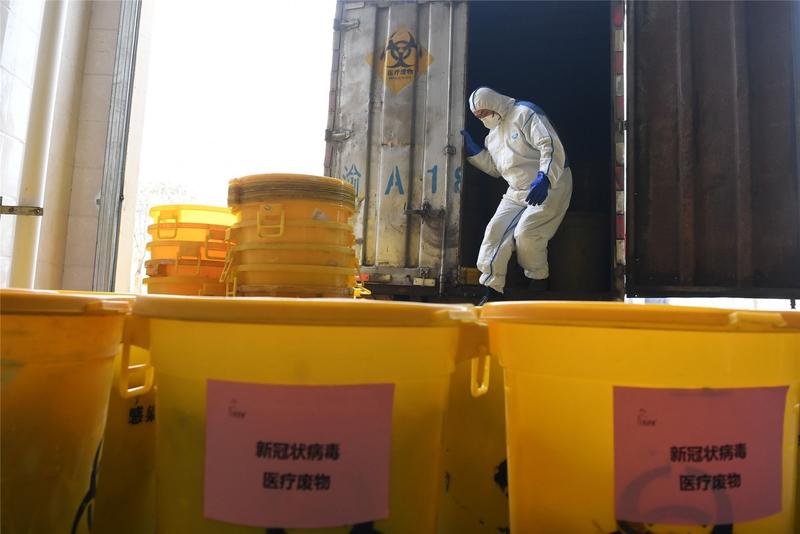 A waste disposal worker transfers medical waste at the Second Affiliated Hospital of Chongqing Medical University in Chongqing on Feb 19. (PHOTO / XINHUA)
A waste disposal worker transfers medical waste at the Second Affiliated Hospital of Chongqing Medical University in Chongqing on Feb 19. (PHOTO / XINHUA)
China unveiled a wide-ranging plan recently to enhance its capability for medical waste disposal as Wuhan, Hubei province, scrambles to cope with such waste in its battle against the novel coronavirus outbreak.
Drafted by 10 central government bodies, including the National Health Commission and the Ministry of Ecology and Environment, the plan vows to establish a system for the collection, transportation and disposal of waste in each county by June 2022.
Before that, all cities above prefecture level will have to build at least one facility for the concentrated disposal of medical waste by the end of this year, according to the document.
Before that, all cities above prefecture level will have to build at least one facility for the concentrated disposal of medical waste by the end of this year, according to the document.
READ MORE: Discarded masks must be properly disposed of
Aside from encouraging the development of mobile or preprocessing facilities to help remote areas dispose of their medical waste locally, the country will explore a mechanism that features coordination and compensation to facilitate cross-region concentrated disposal, it said.
The plan was published as a spate of medical waste in Wuhan-a city of 11 million people and ground zero of the epidemic-has left disposal facilities in the city overwhelmed.
A total of 200 metric tons of medical waste, including 112 tons related to the epidemic, were collected in the city on Feb 24, according to a media release from the environmental ministry.
Wuhan managed to dispose of 179 tons of the waste and had to turn to the nearby cities of Xiangyang and Huangshi, both in Hubei province, for help with the rest. Meanwhile, the city still has 190 tons of medical waste stockpiled as of Feb 24, the release said.
ALSO READ: Producers of chemicals to face inspection
It also said, however, that the current daily capability for medical waste disposal has surged to 263 tons from 50 tons before the outbreak.
Between Jan 20 and Feb 24, almost 100,000 tons of medical waste was disposed of across the country.
Further, as of Feb 24, the country's total daily disposal capacity for such waste has reached 5,831 tons-up by 928 tons from Jan 20, the ministry said.
According to the ministry's 2019 annual report on solid waste, 817,000 tons of medical waste were generated in 200 large and medium-sized cities across the country in 2018, and only 1,000 tons of it were not disposed of that year.
However, the newly published document said the plan was drafted to address "the gap between the country's disposal capacity and the medical institutes' demand and the public's expectation".
"The capacity for concentrated disposal of medical waste fails to meet the need," it said. "The management of infusion bottles and bags is challenging. The medical institutes are overburdened by the cost of disposing of the waste."
The document asks medical institutes to sort their waste into three varieties-infusion bottles and bags, medical waste and domestic waste-and dump, collect, store, transfer and transport them all in a sorted fashion.
It pointed out, however, that domestic waste produced in the treatment of patients with infectious diseases should be sorted and disposed of as medical waste.
Mao Da, director-general of Toxics Free China, a Shenzhen-headquartered NGO, said the plan exhibits the country's efforts in promoting the "delicate management" of waste.
"It also addresses the public's concern that many of the infusion bottles and bags may be recycled illegally," he said.
Local governments should ensure that all infusion bottles and bags in areas under their jurisdiction can be collected and recycled, with the help of at least one company for such collection and one for recycling, the plan ruled.


